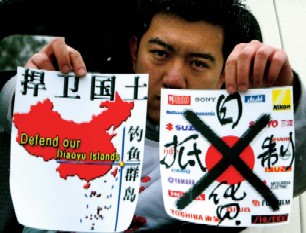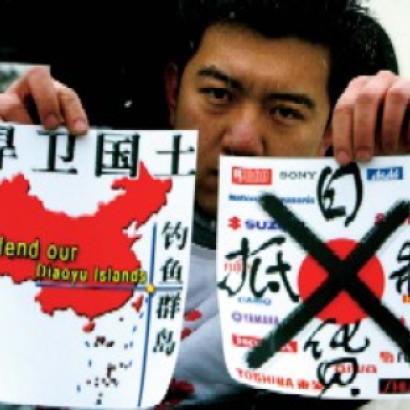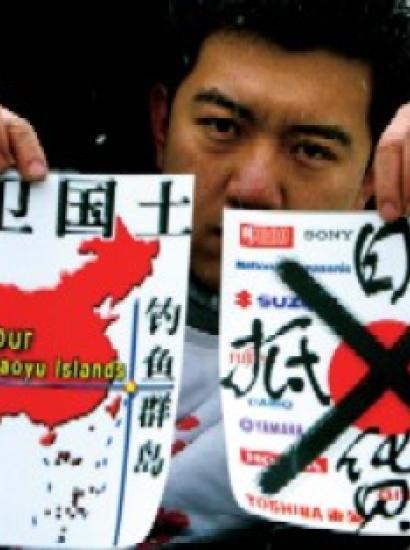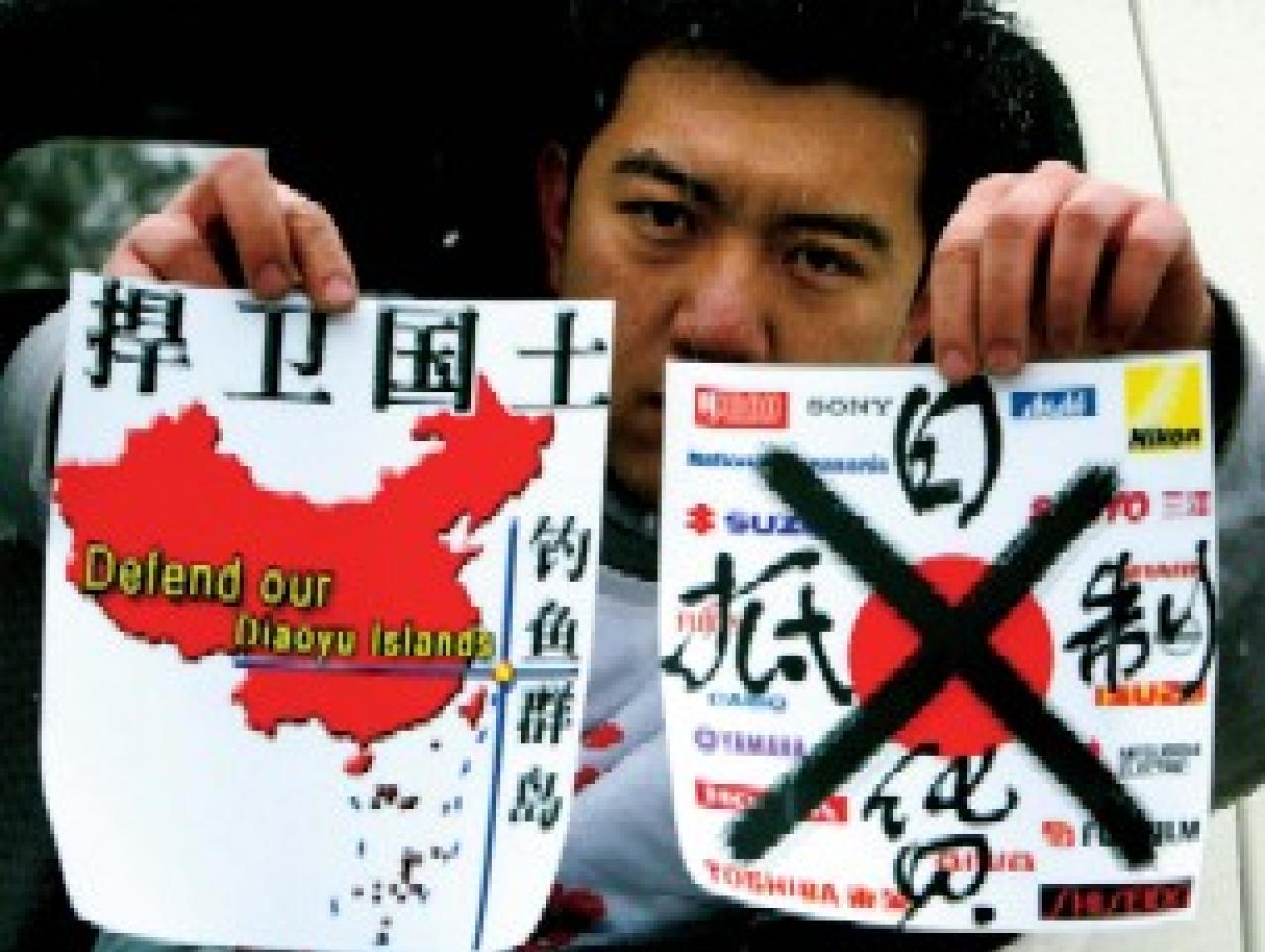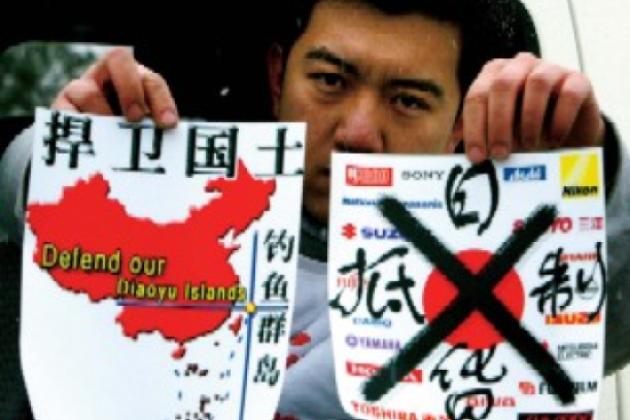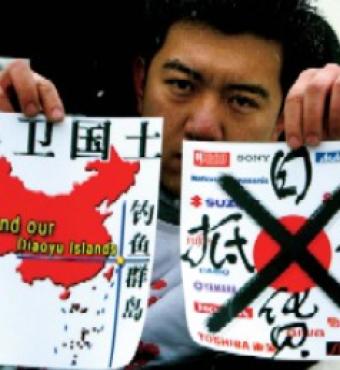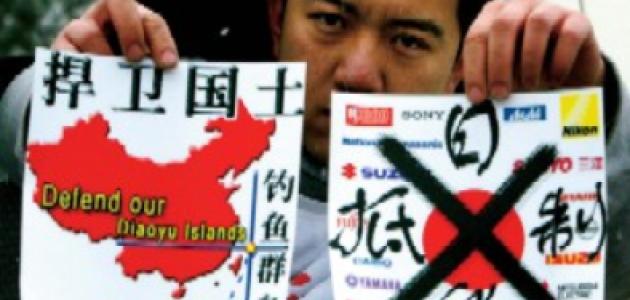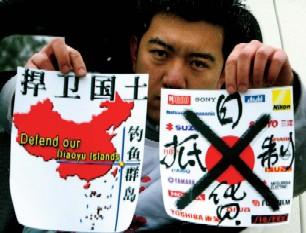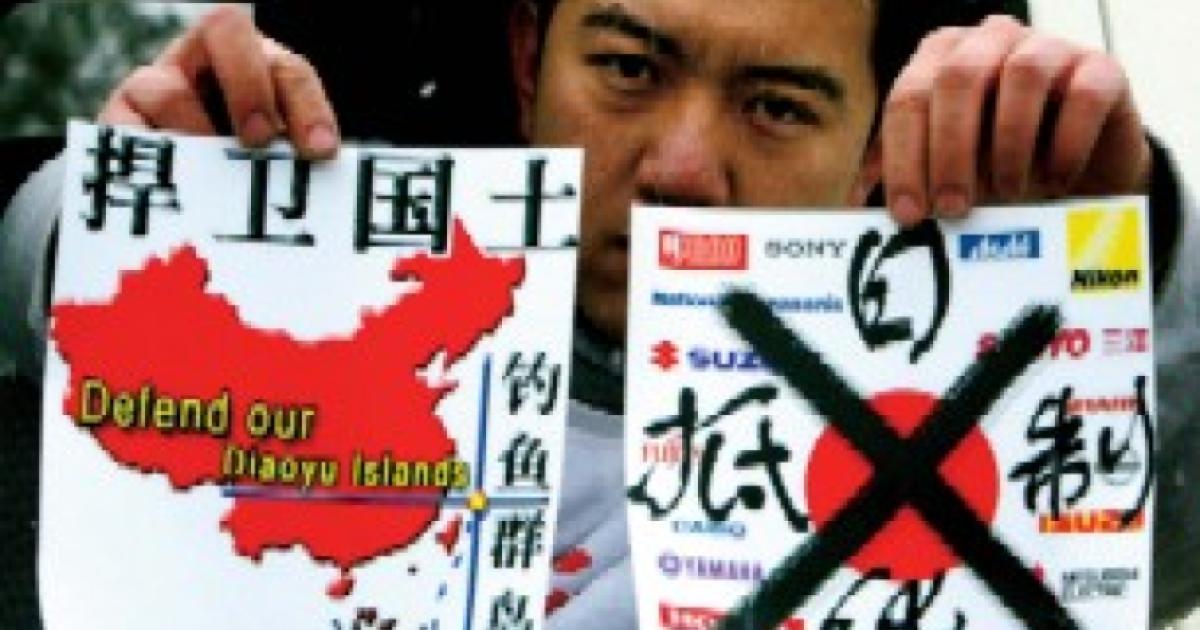If one day China should change her color and turn into a superpower, if she too should play the tyrant in the world, and . . . subject others to her bullying, aggression and exploitation, the people of the world should identify [it] as social-imperialism, expose it, oppose it and work together with the Chinese people to overthrow it.—Deng Xiaoping, speech to the U.N. General Assembly, 1974
In April of this year, just three days before President Hu Jintao was to meet President Bush, the Japanese press reported that China had unilaterally banned shipping around a gas field in the East China Sea that is claimed by both Beijing and Tokyo. It was further reported that China had begun to divert Japanese fishing boats from the area. Fortunately, within 48 hours, China revised its ban on shipping in these international waters, reportedly admitting that it had made a “mistake” in defining the banned area.
Most recently, on July 3, the Japan Times reported that a Chinese maritime survey ship, the Dongfangfong No. 2, was spotted inside Japan's claimed exclusive economic waters in the East China Sea, just 24 kilometers
southwest of the island of Utosuri, the main island in the Senkaku Islands (the Chinese call them the Diaoyu Islands). Reportedly the Dongfangfong No. 2 had conducted the survey without notifying the Japanese government, a violation of international law and agreements signed by Japan and China.
Although these isolated incidents in the East China Sea may not be a cause for alarm, add to them a series of threatening actions and a major naval buildup, and they demonstrate a pattern of behavior by China and its People's Liberation Army Navy (PLAN) that challenges the idea of freedom of the seas that the United States has maintained as the status quo in the Far East since the end of World War II.
As our relationship with China continues to develop, the United States should specify its support for freedom of navigation and peaceful resolution of disputed maritime territorial claims, as laid out in the U.S. State Department's “responsible stakeholder” policy. This policy, recognizing that China is at a historic period of transition, emphasizes managing shared interests inside the international system. To this end, the policy should be expanded to cover the emerging dispute that exists in the East China Sea, including an explicit requirement that China abide by established principles of the law of the sea.
Actions Speak Louder Than Words
Animosity from China against Japan has been brewing in the East China Sea over a dispute regarding the demarcation of each nation's exclusive economic zone (EEZ). The issue takes on added significance because gas and oil reserves beneath the seabed are an estimated 200 billion cubic meters.
Since the late 1990s, Chinese scientific research vessels have conducted “explorations” of Japan's territorial seas and EEZ, most notably in the East China Sea. Under the 1982 United Nations Convention on the Law of the Sea (UNCLOS), which both China and Japan have ratified, advance approval is required when one country wants to conduct oceanographic research in the EEZ of another. Yet from 1998 to the present, Chinese research vessels have engaged in a pattern of unannounced surveys, despite Japanese protests.
| In August 2003 the Chinese government concluded development contracts with oil companies for exploration and production projects in the disputed region, a first signal of Chinese intentions seriously to exploit the area. |
China's interest in these waters has not been limited to sending in unannounced scientific research vessels. Chinese submarines ventured into Japanese territorial waters in October 2003 and November 2004. The 2004 incident involved a Chinese Han-class nuclear fast-attack submarine, which led to the highest alert levels in Japan since the end of World War II. Then, in September 2005, for the third year in a row, China deployed a five-ship surface action group into the disputed area of the East China Sea for a show of force against Japanese fishing and Maritime Self Defense Force assets.
Disputed Territory
To fully appreciate the dispute over the gas and oil fields in the East China Sea, it is helpful to examine the divergent claims that China and Japan have over the Diaoyu/Senkaku Islands. These eight uninhabited islands 200 kilometers northeast of Taiwan are claimed by China on the premise that the Chinese discovered the islands and have maintained “sovereignty” over them for hundreds of years. Japan, for its part, argues that the islands were not claimed by China from 1895 to 1971 and that it was only when petroleum resources surfaced that China (and Taiwan) questioned the islands' ownership.
| From 1998 to the present, Chinese research vessels have engaged in a pattern of unannounced surveys in the East China Sea, despite Japanese protests. |
The dispute over the Diaoyu/Senkaku Islands began to take shape in the 1970s and 1980s, but in the early 1990s it expanded northward to the East China Sea after surveys indicated the presence of gas and oil reserves in that portion of the seabed.
The controversy between the two nations derives from contradictory statements in the UNCLOS treaty regarding the establishment of EEZs. In response, Japan has proposed that the waters between the Chinese mainland and Japan's Ryukyu Island chain be demarcated by a “median line,” which it maintains is the legitimate delimitation between China's and Japan's EEZs. China has consistently rejected the median line, regarding it as a unilateral proposal that would place its claims in the East China Sea and the Diaoyu/Senkaku Islands inside Japanese territory, something it vehemently refuses to acknowledge. This overlap in both nations' EEZ claims amounts to an estimated 300,000 square kilometers, beneath which lie potentially vast untapped gas and oil reserves.
It's about Energy
In August 2003 the Chinese government concluded development contracts with oil companies in China and elsewhere—including Royal Dutch/Shell and UNOCAL—for exploration and production gas projects in this
disputed region worth billions of dollars, a first signal of Chinese intentions seriously to exploit the disputed area.
The situation grew tense in June 2004 when the Chinese announced they had begun constructing a drilling facility at the Chunxiao field, just 1.5 kilometers east of the median line. Several rounds of bilateral talks followed, but no progress was made.
Internal political tensions in Japan mounted in March 2005 after the Japanese press conducted an airborne reconnaissance of the region that showed a fleet of Chinese vessels laden with construction materials for building gas and oil platforms in the Chunxiao region. Confirmation that the Chinese were hurriedly proceeding with the development of these fields was impetus enough for Japan to announce in June 2005 that it would begin accepting applications for exploratory drilling rights in the disputed region (on both sides of the median line).
Immediately following the Japanese announcement, Chinese foreign ministry officials lodged a protest, calling it a “severe provocation and violation” of China's sovereignty and national interests. Some Chinese commentators even warned that Japan's unilateral actions would turn the East China Sea into “waters of confrontation.”
Threatening Signals
If that had been the extent of the Chinese reaction, then concerns about an emerging pattern of Chinese behavior would have been muted. Unfortunately, Beijing chose not to leave the dispute in diplomatic channels.
In September 2005 China dispatched a five-ship surface action group (SAG) to the waters surrounding its gas and oil platforms. This Chinese SAG included China's most potent surface combatant, a Sovremenny-class destroyer, as well as two Jianghu-class frigates, an oiler, and an observation ship (for command and control purposes). Although the SAG's presence was perfectly legal, the situation was exacerbated when one of the Chinese frigates reportedly trained an antiaircraft gun on a Japanese maritime patrol plane that was flying a reconnaissance patrol in the area. This incident could well have escalated into a military confrontation, even had the Chinese ships stayed on their side of the unrecognized median line.
| In September 2005 a Chinese frigate reportedly trained an antiaircraft gun on a Japanese maritime patrol plane that was flying in the disputed area. |
Further rounds of director-level talks occurred in March and May 2006, rife with rumors about a potential joint venture; however, the strain in relations between the two nations prevented any concrete progress toward a settlement. In the most recent round of talks, held July 8–9 in Beijing, the two sides agreed in principle to set up a maritime hotline for unpredictable situations in the area, but the Chinese and Japanese diplomats still acknowledged that “great differences” exist.
Tensions flared for a brief period in April 2006 when the Chinese announced a ban against shipping in a 200-kilometer by 3-kilometer area around the Pinghu gas field, extending southeast into the Japanese side of the median line. Although this incident did not escalate, such unilateral actions by China have weakened the prospects for stability in the East China Sea.
China's Naval Modernization Plan
To place these events into a broader context, we must take into account the modernization of the PLAN during the past five years. China's 10 percent annual GDP growth rate has fueled annual defense budget increases in excess of 10 percent from 2000 to 2005.
| China expects its 2007 defense budget to increase by 15 percent, leading to another round of unprecedented naval modernization during the 11th Five-Year Plan (2006-11). |
Some analysts assess the PLAN as technologically weak and lagging far behind the U.S. Navy, thus implying that a dispute over freedom of the sea in the East China Sea is not a concern. A more useful measurement, however, is the relative and evolving strength of the PLAN vis-à-vis other Asian nations' maritime capabilities and how a change to this regional maritime balance of power could adversely affect stability in the East China Sea.
Although the total number of submarines and surface combatants in the Chinese inventory remained relatively constant during China's 10th Five-Year plan (2000–2005), Chinese naval strategy focused on the acquisition of sophisticated antiship cruise missiles (ASCMs). These ASCMs give the PLAN a modern and lethal “antiaccess” capability, which is especially relevant in the disputed region of the East China Sea.
In terms of the tactical balance of power, senior U.S. Navy officials have noted that “while the United States builds one submarine a year [2005], China is acquiring 11 this year alone.” Some estimates indicate that, by 2010, the Chinese navy could have 75 or more submarines of contemporary design and that, if current trends continue, the U.S. Navy will have many fewer.
In addition to their submarine force, the Chinese have also transformed their surface ships using the same antiaccess acquisition strategy, most apparently in the procurement of Russian-made Sovremenny-class destroyers and the deployment of indigenously produced Luyang I/II-class destroyers, both with highly effective ASCMs. The Chinese surface fleet today has developed this new generation of ships that appear, at the very least, to be capable of disrupting the U.S. Seventh Fleet's involvement in maritime security affairs inside the waters of the East China Sea.
With China's March 2006 announcement that it expects its 2007 defense budget to increase by almost 15 percent, another round of unprecedented naval modernization seems set to occur during the 11th Five-Year Plan (2006–11).
What, then, can U.S. policymakers do to ensure that the waters of the East China Sea remain calm?
Responsible Stakeholders
Between September 2005 and April 2006, several high-level visits have occurred between the United States and China, demonstrating the significance Washington places on its relationship with Beijing. U.S. policy must continue to challenge China to be a “responsible stakeholder” in the region. We've given China a clear sense of what this policy entails through the series of visits by the commander of the U.S. Pacific Command, Admiral Fallon, which emphasized closer military-to-military relations, as well as by Secretary of State Rice's recent statements that “all of us in the region . . . have a joint responsibility and obligation to try to produce conditions in which the rise of China will be a positive force in international politics, not a negative one.”
| The U.S. challenge to China to be a responsible stakeholder in the region must include a commitment to freedom of the sea. |
Deputy Secretary of State Robert Zoellick admirably refined the “responsible stakeholder” policy during his May 2006 briefing to the House of Representatives Committee on International Relations. In his briefing, Zoellick outlined the following tenets of the policy: economics and trade; human rights and democracy; and security, political, and transnational issues. Although his presentation correctly identified the major security topics—such as North Korea, Iran, and terrorism—the briefing made no reference to China's actions in the disputed region of the East China Sea.
Because China's actions in this arena are inconsistent with the basic tenets of international law, future policymakers should make it clear that the United States does not support any infringement on the free use of the sea. If left unchallenged, this would allow for the creation of a new maritime sovereignty with Chinese characteristics that has thus far been destabilizing in the East China Sea (and ultimately unprofitable for China in its relationship with Japan).
The U.S. challenge to China to be a responsible stakeholder must include a commitment to freedom of the sea. In this venture we can only hope that our Chinese friends will not take offense, especially as we recall the words of Chairman Deng Xiaoping from 1974.







